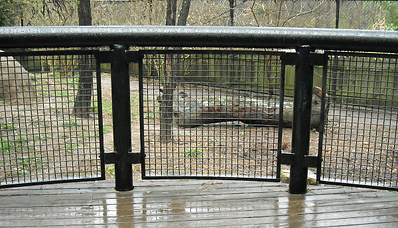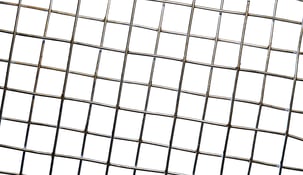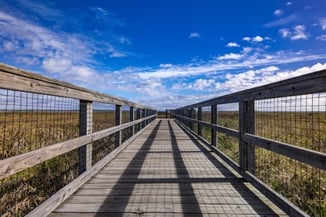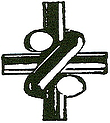Learn how to effectively repair a barbed wire fence by watching this informative YouTube tutorial.
Understanding the Importance of Proper Fence Maintenance
Proper fence maintenance is crucial for ensuring the longevity and functionality of your barbed wire fence. Regular maintenance helps to identify any issues or damages early on, preventing them from becoming more severe and costly to repair. By understanding the importance of proper fence maintenance, you can ensure the safety and security of your property.
One of the key reasons why proper fence maintenance is important is to preserve the fence's structural integrity. Over time, barbed wire fences can experience wear and tear due to weather conditions, animal activity, or accidental damage. Regular inspection and maintenance allow you to identify weak spots, broken strands, or loose posts, which can be promptly repaired to prevent further damage.
Also, proper fence maintenance helps deter unwanted intruders and secure your property. A well-maintained barbed wire fence acts as a physical barrier, discouraging trespassers and protecting your assets. By regularly inspecting and repairing your fence, you can ensure that it remains an effective deterrent against unauthorized entry.
Lastly, proper fence maintenance can save you money in the long run. By addressing minor repairs early on, you can prevent them from escalating into major issues that require costly repairs or even complete fence replacement. Regular maintenance also extends the lifespan of your fence, delaying the need for a full replacement.
Overall, understanding the importance of proper fence maintenance is essential for any barbed wire fence owner. By implementing regular inspection and maintenance routines, you can extend the lifespan of your fence, enhance its functionality, and ensure the security of your property.
Now, here's the innovative way to repair a barbed wire fence. How simple is this?
Want a more traditional way?
Tools and Materials Needed for Repairing a Barbed Wire Fence
Repairing a barbed wire fence requires a few essential tools and materials to ensure a successful repair. Before you begin the repair process, gather the following items:
1. Pliers: Pliers are necessary for bending and twisting the wire during the repair process. Choose pliers with a comfortable grip and strong jaws.
2. Wire cutters: Wire cutters are essential for cutting the barbed wire strands. Opt for sturdy wire cutters that can handle the thickness of the wire.
3. Fence stretcher: A fence stretcher is used to tighten the wire and ensure it is properly tensioned. This tool is especially useful when repairing a broken strand or tightening loose sections.
4. Gloves: It is important to wear gloves to protect your hands from the sharp barbs on the wire. Choose gloves that provide a good grip and offer sufficient protection.
5. Replacement wire: Depending on the extent of the damage, you may need to replace a section or multiple strands of the barbed wire. Ensure you have enough replacement wire on hand.
6. Fence clips or staples: Fence clips or staples are used to secure the wire to the fence posts. Make sure you have an adequate supply of these fasteners.
7. Hammer: A hammer may be required to drive in fence staples or to make adjustments to the fence posts.
By having these tools and materials ready, you can efficiently repair your barbed wire fence and ensure a secure and functional result.
Step-by-Step Guide to Repairing a Broken Barbed Wire Strand
Repairing a broken barbed wire strand requires a systematic approach to ensure a proper and long-lasting repair. Here is a step-by-step guide to help you through the process:
1. Assess the damage: Start by inspecting the fence to identify the exact location and extent of the damage. Determine whether the wire needs to be repaired or replaced.
2. Remove the damaged wire: Use wire cutters to carefully remove the damaged section of wire. Be cautious of the sharp barbs and wear protective gloves.
3. Prepare the replacement wire: Cut a new piece of barbed wire slightly longer than the section you removed. Use pliers to bend one end into a loop, which will make it easier to attach to the fence posts.
4. Attach the replacement wire: Place the looped end of the replacement wire around one of the fence posts and secure it using fence clips or staples. Pull the wire tightly and attach the other end to the remaining post.
5. Ensure proper tension: Use a fence stretcher to tighten the wire and ensure it is properly tensioned. This step is crucial for maintaining the integrity and effectiveness of the fence.
6. Trim excess wire: Once the wire is securely attached and tensioned, use wire cutters to trim off any excess length. Be careful not to leave any sharp edges.
7. Test the repair: Give the repaired section a gentle tug to ensure it is secure and properly tensioned. Check for any signs of weakness or loose connections.
By following these step-by-step instructions, you can effectively repair a broken barbed wire strand and restore the functionality of your fence.
Incorporating Safety Measures During the Repair Process
Repairing a barbed wire fence involves working with sharp objects and potentially hazardous materials. It is crucial to prioritize safety during the repair process to prevent injuries. Here are some safety measures to incorporate:
1. Wear protective gear: Always wear appropriate personal protective equipment, including gloves, safety glasses, and sturdy footwear, to protect yourself from potential injury.
2. Use caution with sharp objects: Handle wire cutters and pliers with care, as they have sharp edges. Avoid placing your fingers on the wire's barbs to prevent cuts or punctures.
3. Secure the work area: Make sure the area where you are repairing the fence is clear of obstacles and tripping hazards. Keep children and pets away from the work area to prevent accidents.
4. Work in daylight or well-lit conditions: Repairing a fence in low-light conditions increases the risk of accidents. Choose a time of day when there is sufficient natural light or use artificial lighting to ensure good visibility.
5. Be mindful of your surroundings: Note any overhead power lines or other potential hazards in the vicinity of the fence. Keep a safe distance to avoid accidents or electrocution.
6. Take breaks and stay hydrated: Fence repair can be physically demanding. Remember to take regular breaks and stay hydrated to prevent fatigue and maintain focus.
By incorporating these safety measures, you can minimize the risk of accidents and injuries while repairing your barbed wire fence.
Tips for Preventing Future Damage and Extending the Lifespan of Your Fence
Preventing future damage to your barbed wire fence is essential for maintaining its longevity and functionality. Here are some tips to help you protect your fence and extend its lifespan:
1. Regular inspection and maintenance: Schedule regular inspections to identify any issues or damages early on. Promptly address any broken strands, loose posts, or weak spots to prevent further damage.
2. Clear vegetation around the fence: Overgrown vegetation can put pressure on the wire, leading to damage or strain. Regularly trim any plants or bushes growing near the fence to maintain proper clearance.
3. Protect against animal activity: Animals, such as livestock or wildlife, can cause damage to a barbed wire fence. Install additional deterrents like electric wires or wildlife-friendly fencing to prevent animal-related damage.
4. Reinforce weak spots: Areas that are prone to damage, such as corners or gates, should be reinforced with additional support. Use sturdy posts, braces, or tensioning devices to enhance the strength of these vulnerable sections.
5. Apply rust-resistant coatings: Barbed wire fences are exposed to the elements, making them susceptible to rust and corrosion. Apply rust-resistant coatings or paint to protect the wire and prolong its lifespan.
6. Monitor fence tension: Regularly check the tension of the wire to ensure it is adequately tightened. Loose or sagging sections can compromise the effectiveness of the fence and make it more prone to damage.
By following these preventive measures, you can minimize future damage to your barbed wire fence and significantly extend its lifespan.

















